China Wants To Build a Rail Line to USA & South America through Canada
Aug 22 2023
June 29, 2014
The Chinese government have announced plans to build a rail line from their mainland to the Continental United States.
Dubbed the “China-Russia-Canada-America” line, the project would run 8,000 miles from northeast China through Siberia, under the Bering Strait, through Alaska and Canada and into the Lower 48 states.
Russia – and some in the United States – have discussed the possibility of tunneling under the 215-mile Bering Strait between Alaska and Siberia for decades. (I lived in Anchorage in the 1980s and remember discussion of the project, even in the heat of the Cold War.) There’s even a U.S. website that discusses the possibility.
The state-run website Chinese Daily said the technology is already in place to build the line – which would be the most ambitious, and expensive, rail project in history. Cost estimates are in the many hundreds of billions of dollars. Experts say the rail could run at 200-miles-per-hour, meaning a trip from China to the United States could take less than two days.
Proponents of the project – many of which see high-speed rail spanning the two hemispheres as a real possibility – claim the economic benefits of such a rail are massive, including economic development in Siberia and interior Alaska, which offer vast natural resources.
China is actively pursuing four high-speed rail lines, connecting the communist state to Europe and the rest of Asia.
Finally, a Bering Strait Tunnel?
The inclusion of the Bering Strait Tunnel in an outline of China’s plans for global rail development in the state-run Beijing Times on May 8 has again put that long-standing project on the international agenda. U.S. rail expert Hal Cooper, who has been a long-term advocate of the project, told Ria Novosti in the wake of that announcement that the Chinese action means that the project “will never be swept under the rug again.”
The proposal for a rail link from Siberia to Alaska across the Bering Strait has been mooted since the time of Abraham Lincoln, but the idea went through a renaissance beginning with the work of the Schiller Institute in the early 1990s, when Helga Zepp-LaRouche and Lyndon LaRouche embarked on their campaign for a World Land-Bridge of development corridors. Both LaRouches have conceived of the project both as a spur to global economic development and a means of war avoidance through cooperation among key nations such as the United States, Russia, and China, all of which are needed to realize such a project.
2007 Nodal Point
2007 was a breakthrough year for the project, featuring a number of high-profile conferences and decisions that spotlighted the tunnel project.
At an April 10 meeting on rail transport, chaired by President Vladimir Putin, Vladimir Yakunin, head of the state-owned company Russian Railways, laid out construction of the 3,500-km rail line from the right bank of the Lena River to the Bering Strait, as a significant task. That line would later be included as one of strategic importance for the future, in the Russian Railways Strategy for Rail Development in the Russian Federation to 2030, published in July 2007.
Russian proponents of the Bering Strait project conducted a publicity drive around an April 23 conference titled “Megaprojects of Russia’s East: Intercontinental Eurasia-America Link via the Bering Strait.” This was organized by the Council for the Study or Productive Forces (SOPS), a joint institution of the Russian Academy of Sciences and the Russian government’s Economics Ministry (MERT). Co-sponsors were the Economics Ministry itself, the Russian Ministry of Transport, Russian Railways, and several regional governments in Siberia and the Russian Far East.
On April 16, the late Academician Alexander Granberg, then head of the SOPS, explained in an interview how the project fit into the Russian leadership’s vision of the development of transportation infrastructure as essential for uplifting Russia’s huge outlying regions.
Then on April 18, at a pre-event press conference held by the SOPS project working group, SOPS Vice-Chairman Victor Razbegin, also of the MERT Industrial Research department, grabbed headlines in the Russian media with his huge map of the proposed $65 billion multi-modal Bering Strait tunnel from Russia to Alaska, with its associated long-distance rail and power lines.
At the conference itself, high-level Russian participants were joined by speakers from South Korea, Japan, and the United States.
In the opening session, two American contributions put forward the idea that great development projects are the path, leading away from war. These were the remarks by the late Governor of Alaska and U.S. Secretary of the Interior Walter Hickel, a strong backer of the Bering Strait tunnel project; and Lyndon LaRouche’s article, “The World’s Political Map Changes: Mendeleyev Would Have Agreed.” The article by La-Rouche, requested by conference organizers for publication in connection with the event, was read to the meeting.
Granberg told the conference that the next step would be design and feasibility studies for the 6,000-km rail-road-pipeline-power corridor from Yakutsk in Eastern Siberia to Fort Nelson, Canada, including a 100-km tunnel under the Bering Strait.
At the end of the conference, April 25, the participants issued an “Appeal from the participants of the international conference on an Intercontinental Eurasia-America Transport Link via the Bering Strait, to the heads of state and governments of Russia, the U.S.A., Canada, South Korea, Japan, China, and the EU member- states.” Along with the Appeal, the participants at the April Moscow conference sent a draft Memorandum of Cooperation, proposing that those nations endorse the project and consider financing feasibility studies for the Bering Strait project at the June 6-8, 2007 G-8 summit in Heiligendamm, Germany. The studies, they said, could have been completed by 2010.
Global Support
While the issue was not known to have been taken up at the G-8 summit, high-profile organizing continued. Among the highlights was the Schiller Institute’s Sept. 15 conference in Kiedrich, Germany, which in addition to the LaRouches, featured speakers from around the world, including an impressive delegation of Russian scholars and political leaders.
Among them were Prof. Stanislav Menshikov of the Russian Academy of Sciences; Razbegin; and Dr. Sergei Cherkasov and Academician Dmitri Rundqvist, both of the Vernadsky State Geological Museum; and Hal Cooper. The prospects for the Bering Strait rail tunnel as part of the global land-bridge were highlighted.
The Russians have also kept the project on the radar screen, although the global financial crisis and the geopolitics in the West have erected major barriers to it being able to go ahead. The Russians again attempted to place the project on the international agenda, at the November 2010 G20 summit in South Korea. Russian Federation Council member Aslambek Aslakhanov, formerly an advisor to President Putin, told Novosti of the critical role of this project for the industrial development of the entire region, by linking four continents.
Also in 2010, the Chinese interest in the project was demonstrated when the Grand Prize for innovation at the Shanghai World Expo-2010 went to the Bering Strait Tunnel project, submitted by Russia’s SOPS. Razbegin was on hand to receive the award for this “intercontinental multimodal transport tunnel” design.
New Prospects
China’s renewed public attention to the Bering Strait project has come virtually on the eve of Putin’s May 20-21, 2014 visit to Beijing, where new levels of economic cooperation are expected to be discussed, and certain agreements, such as on natural gas, which have been under negotiation for some time, are expected to be consolidated.
Will these two leaders of the Eurasian world, who have been pursuing high-technology economic development, in stark contrast to the United States and Western Europe, take the occasion to publicly offer to the U.S., and others, cooperation on the Bering Strait megaproject?
Given the utterly bankrupt condition of the trans-Atlantic system, the time for such a renewed offer is more than right.
999 Canada Place, Vancouver, BC Canada ....The Hub
China’s “belt and road” strategy embraces Surrey
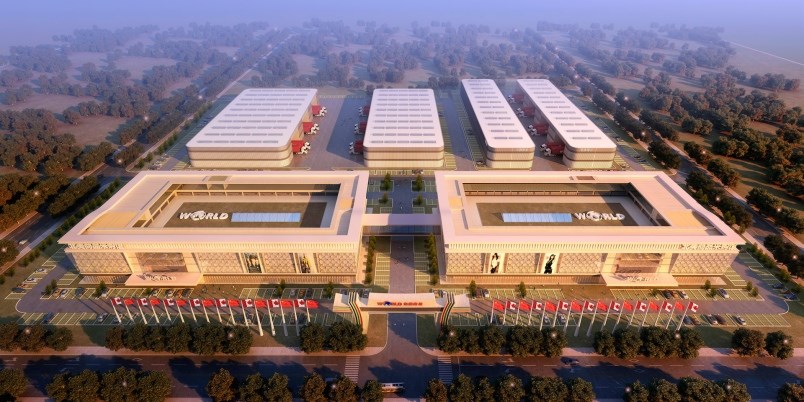
A major construction in Surrey is not just paving the way for more trade between B.C. and China. It could be helping pave Chinese President Xi Jinping’s Belt and Road Initiative to Canada.
The massive $190 million, 470,000-square-foot complex, dubbed the “World Commodity Trade Center,” is a joint venture between a Chinese state-sponsored company and a local development firm. The centre, first conceived in Beijing, has four warehouses and two large exhibition halls — to be lined with Chinese and Canadian flags — strategically located in the Campbell Heights industrial zone between Vancouver International Airport and the United States border.
The centre is purported to be one of several non-Chinese import-export facilities servicing a central commodities hub on the outskirts of Beijing, called Yanjiao International Trade City, being developed by brand company World Commerce Valley, a division of Hong Kong-based trading firm Shing Kee Godown Group. The centre is being developed through Canadian subsidiaries North America Commerce Valley Development Ltd. and Shing Kee Godown (Canada) Holdings Ltd. and in partnership with local development firm Pollyco Group.
The centre’s proponents say it will facilitate the packaging, processing and storage of outgoing Canadian commodities and incoming Chinese products, to be showcased at exhibition hall events and trade conferences — all driven by an e-commerce trade model. Its detractors believe it is the thin edge of the wedge in facilitating a stronger presence of Beijing-directed business in the region.
A trailblazing memorandum of understanding (MOU) on the Belt and Road Initiative (BRI) between the B.C. government and Guangdong province in 2016 precedes the project. This MOU, signed by former BC Liberal Premier Christy Clark, is the only such one in North America. Most Western jurisdictions have been apprehensive of Xi’s aspirations of emboldening China’s national and economic interests on a global scale, via the BRI’s foreign infrastructure investments and overseas financial, social and cultural programs, which initially targeted developing Asian countries.
Ground broke on the facility on October 7, 2018, with China’s consul general Xiaoling Tong taking centre stage, flanked by local politicians, development partners and associates of the United Front Work Department, a Chinese Communist Party (CCP) agency that political analysts say promotes China’s interests among Chinese diasporas, often by persuading local Chinese organizations that may be sanctioned or supported by the department itself.
In interviews with political and trade experts, concerns have been raised over such foreign influence activities, as well as the potential cumulative impact of additional such trade facilities, which on their own do not meet the threshold for a federal government foreign investment review.
“Certainly, the Chinese government develops these projects with a strategic mandate,” said Charles Burton, associate professor of political science at Brock University and senior fellow at the Canadian think tank MacDonald Laurier Institute.
A prominent figure of the United Front in B.C. is leading the project.
Guo Taicheng is chairman of Hong Kong-based trading firm Shing Kee Godown Group. The businessman is also executive vice-president of the China Federation of Overseas Chinese Entrepreneurs, which is part of the All-China Federation of Returned Overseas Chinese (AFROC) of the CCP’s United Front.
Guo — who says he is a permanent resident of Canada, who splits his time between Beijing and Vancouver, where his family lives —markets the centre as a BRI project, however in an interview with Glacier Media, via a translator, he distances the project from Xi’s ambitious plan for global hegemony, first announced in 2013.
“The belt and road initiative only provides an opportunity, but the idea started many years ago,” he said. “Whether or not there’s a belt and road or whether or not it comes to North America doesn’t concern us [Shing Kee].”
In November, 2014, Shing Kee and Pollyco signed a framework agreement on the centre at a Vancouver investment summit. In 2015 Shing Kee took part in an agricultural trade conference with B.C. and Canadian agriculture and trade officials in attendance.
Guo envisions Canadian food producers as key warehouse tenants. The Surrey facility, he said, will lease space to small- to medium-sized Canadian businesses and “offer them entry to the Chinese market.”
Guo said the market would dictate what comes back to Canada, suggesting at this time Chinese-manufactured personal protective equipment could be a hot import upon opening. (Following the COVID-19 pandemic, Xi announced intentions of a China-led “health silk road,” as part of the increasingly broad BRI mandate.)
Guo confirmed associations such as AFROC require approval from the Chinese government and “to join the association will certainly bring opportunities.”
But he said he is not a member of the CCP and the party “does not tell [him] what to say or not to say,” despite his standing in the organization. Rather, his sole focus is on improving his business, and that means increasing trade.
However, Guo evokes Chinese nationalist rhetoric espoused by Xi, when speaking about the trade centre, which his company asserts is to serve the Yanjiao “mother centre.”
As reported in Chinese state media, Guo told a trade conference in December 2017 that, “The current new era of socialism with Chinese characteristics is a new era for the great rejuvenation of the Chinese nation and a new era for overseas Chinese and overseas Chinese.”
When asked why it is important for his company to focus on the BRI and purported CCP achievements, Guo said, “It’s just to follow the local rules because in China you have to show this type of picture and play by the rules.
And, “How the government views this [trade centre] plan is not up to us,” added Guo, who met with China’s Consul General Tong Xiaoling in Vancouver to discuss the BRI in February 2018, according to the consulate’s website.
Former ambassador to China Guy Saint-Jacques says while many development proposals in China may provide more rhetoric than substance, it is clear this one has some degree of support from the Chinese government — although time will tell whether or not Yanjiao is a “pie in the sky.”
Regardless, he said CCP-sponsored activity in Canada requires a closer examination.
“We should be worried about the activities of the United Front,” said Saint-Jacques.
Of some concern is the degree to which local projects, such as the trade centre, may be controlled in a manner to favour China’s interests over Canada’s, said both Saint-Jacques and Burton.
“I would be interested to look at the contracts the Canadian companies will be asked to sign. If the Chinese are forcing to sign long-term exclusive rights, then I’d be concerned. Companies should learn from the ongoing crisis from China they need to diversify their markets.
“I would be concerned if these guys are saying, for instance, we will become your exclusive exporter to China for your cherries, for example,” said Saint-Jacques.
Pollyco’s manager Hugh Carter told Glacier Media in an interview his company is tasked with marketing the development whereas Shing Kee brings “users who fit into the trading centre.”
But Carter said while the company was aware the trade centre was billed back in China as a BRI project, it is his understanding any Canadian business may lease warehouse space and exporting products to China is not a requirement.
If that is the case, Saint-Jacques said there’s little to worry about with this project specifically.
“Unless this facility offers some kind of advantage or premium for shippers to use it [to export to China], I don’t think this will be significant,” he said.
Burton said he would be particularly worried if Chinese companies bought or built several such facilities in the Lower Mainland.
“That would give China an advantage in sourcing goods to put [Canadian companies] in a position where we couldn’t diversify to other competitors. Arguably, the whole BRI is about re-orienting the global economy to China, because all the belts and roads go to China. No belts and roads go other places,” said Burton.
This could be done without any Canadian government oversight. And so, a failure to understand China’s cumulative impact on commerce in Canada can jeopardize Canadian interests, Burton asserted.
Part of the BRI strategy, said Burton, “involves keeping under the thresholds for government regulation.
“In other words, several projects involving the same investment that put together would cross the threshold for government examination of national security implications. I think that’s part of the strategy,” Burton added.
Presently, Canada has certain federal thresholds for foreign investment reviews: For a member of the World Trade Organization, such as China, any state-owned investment over $428 million requires a review. And the review for the private sector is $1.075 billion — far above the Campbell Heights project, which is larger than Amazon’s regional warehouse in South Delta.
Saint-Jacques is calling on the Canadian government to update its China engagement strategy, which should take a full look at China’s existing assets in Canada and include plans to diversify trade away from the authoritarian regime.
“This review will make sure we aren’t getting into any situation where national security would be at risk,” he said.
Washington, DC-based think tank RWR Advisory, which publishes the monthly Belt and Road Monitor, also states China’s economic policies pose national security risks to the United States and other Western jurisdictions.
That’s why all foreign investment should be tracked, even at the local government level, said RWR analyst Claire Chu.
“Being aware of the money flowing in and out of their territory — I think that’s really important,” said Chu.
Chu said United Front activity can be a harbinger for China’s BRI objectives since these CCP-backed groups play a key role in business arrangements at the local government level.
“That’s increasingly a way China is influencing people from the bottom up and also getting into projects without having to wrangle with the central government,” said Chu, who describes a “huge network” of business people, community leaders and students.
“The idea of the United Front organization is to achieve influence, spread propaganda, spread Chinese government thoughts all over the world — and so a lot of [local groups] are called friendship societies or friendship organizations. They are active all over the world.
“This is not to cast a wide net of suspicion on a group of people, rather to explain that a lot of friendship associations will receive funding from these United Front organizations. It doesn’t mean they’re working for the [Chinese] government, but it does mean they’re more susceptible to government influence, government ideas and participating in government projects,” said Chu.
A tough critic of the CCP, Burton describes a muzzling effect on Canadian citizens and companies.
“The Chinese companies involved cannot be separated from other aspects of the Chinese regime in the sense they need permission from the regime to engage in trade and development projects. The condition is they support the other goals of the Chinese regime,” said Burton.
In turn, the local Canadian companies involved with such Chinese companies would likely need to fall in line with China’s interests, Burton asserted.
“None of the representatives in the (Canadian) companies would be likely to express concern, say, over the national security law related to Hong Kong even though they could well have strong Hong Kong connections and strong feelings …anyone who articulates such a position would likely lose the opportunity to engage in the economic benefits of a project because the Chinese partners would know if they co-operated with people seen as unfriendly to the Chinese regime, then they would suffer in their ability to function,” explained Burton.
Canada lacks foreign influence laws to register and regulate groups acting in the interest of foreign states, noted Burton at a February 24 meeting for the House of Commons Special Committee on Canada-China Relations.
“Australia’s 2018 Foreign Influence Transparency Scheme Act should be examined carefully by this Committee. Canada needs to come to terms with Chinese money benefiting Canadian political campaigns and rewarding Canadian politicians and public servants who are seen as ‘friends of China,’” said Burton.
The National Security and Intelligence Committee of Parliamentarians 2019 annual report spells out much of the concern over CCP activity in Canada.
British Columbia’s foray into China’s Belt and Road Initiative began with senior provincial politicians — namely then International Trade Minister Teresa Wat and Premier Christy Clark — hosting their “sister province” counterparts from Guangdong, including some senior CCP officials, at the May 2016 China-Canada Economic and Trade Cooperation Conference — One Belt One Road Initiative Workshop, held in Vancouver. Clark told the conference she looked forward to “building a one road, one belt policy between our two countries our two provinces.”
The objective of the MOU, stated internal memos from B.C. government staff, “is to strengthen cooperation between the provinces to jointly examine mutually beneficial opportunities presented by China’s One Belt One Road Initiative and British Columbia’s Pacific Gateway Strategy: to enhance maritime connectivity and expand two-way investment and trade in goods and services from energy and natural resources to value added products, professional services, international education and tourism.”
Pacific Gateway is a multibillion-dollar network of road, rail and port infrastructure aimed at increasing exports overseas. It includes prominent projects such as the Port Mann Bridge, Fraser Perimeter Highway, Deltaport Terminal expansion, Vancouver International Airport expansion and the Site C dam to provide electricity for increased LNG production for export — with China being the main buyer.
Campaign to switch Vancouver mayors got support from past, present and future heads of pro-Beijing group
ABC Vancouver’s campaign received donations from past, present and future leaders of an organization that describes itself as an ally of China’s government.
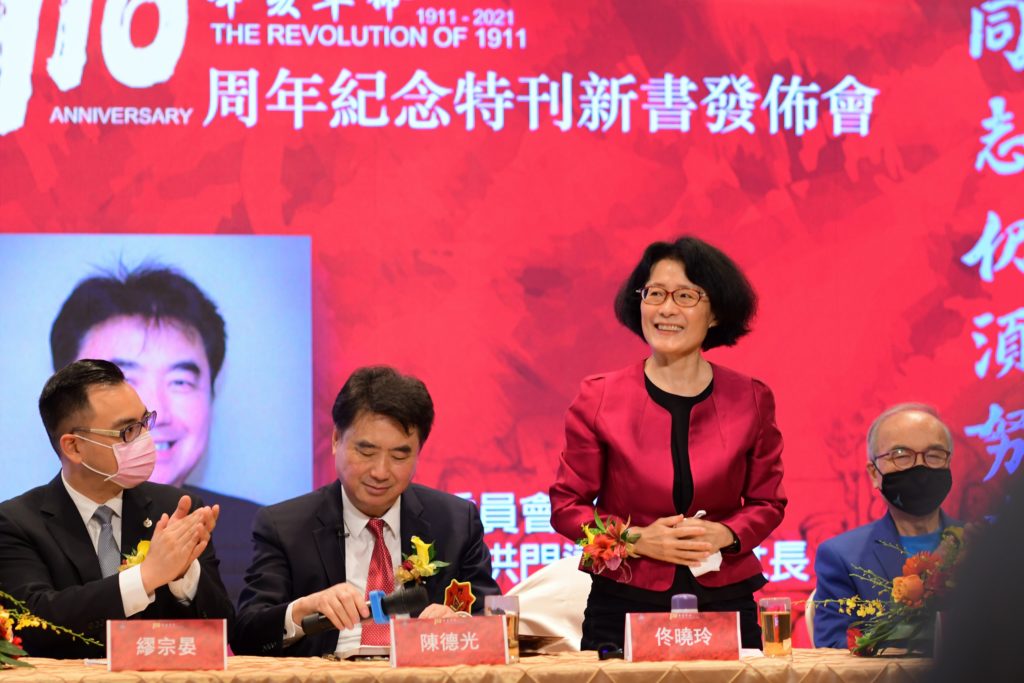
TONG XIAOLING (STANDING) WITH NDP MINISTER GEORGE CHOW (RIGHT) AND LIBERAL MP WILSON MIAO (LEFT) DURING HER LAST-KNOWN PUBLIC APPEARANCE IN VANCOUVER ON JULY 10.
Elections BC disclosures show a $1,500 donation from Wei Renmin, the South Surrey resident who was executive chair of the Canadian Alliance of Chinese Associations from 2020 to 2022.
One of his predecessors, Shaughnessy’s Miaofei Pan, and his successor, Richmond’s Kady Xue Xiaomei, donated $1,250 and $600, respectively, to Ken Sim’s winning bid to replace Kennedy Stewart as Mayor of Vancouver. Pan famously hosted Prime Minister Justin Trudeau for a private fundraiser at one of his mansions in 2016.
CACA is the Richmond-based umbrella for more than 100 business and cultural groups. The CACA website states that it is in active participant in the activities of the Overseas Chinese Affairs Office (OCAO), the arm of the Chinese Communist Party’s United Front program that aims to influence foreign politicians to favour the Chinese government.
In 2018, Sim narrowly lost to Stewart by just 957 votes. But, last Oct. 15, Sim won by a 36,000-vote margin and his ABC party took supermajorities on city council and park board. Sim unofficially launched his campaign in October 2021 with members of CACA and People’s Republic of China consular officials at an event promoting the Beijing 2022 Winter Olympics.
The difference in 2022 may have been Consul General Tong Xiaoling. On Thursday, the Globe and Mail quoted from a leaked January 2022 report by Canada’s spy agency that said Tong was working to help elect a Chinese-Canadian candidate. Tong, who ended her five-year posting last July, was also quoted in another leaked CSIS report about interfering in the 2021 federal election in favour of the Liberal Party.
Stewart was at odds with Tong for announcing a boycott of meetings with Chinese officials in April 2021 due to China sanctioning his friend, Conservative MP Michael Chong. Chong was among the 266 parliamentarians who voted to condemn China for genocide against Uyghur Muslims. Stewart also raised the ire of Tong when he spoke out in favour of stronger trade and diplomatic ties with Taiwan.
Last June, Stewart admitted he met with Canadian Security Intelligence Service officers who warned him the Chinese government and its proxies would meddle in the election. ABC politicians originally criticized Stewart, but Sim said in the final week of the campaign that he had contacted CSIS in June.

SENATOR VICTOR OH HONOURS XUE XIAOMEI, CHAIR OF THE CANADIAN ALLIANCE OF CHINESE ASSOCIATIONS, AT A JAN. 23 QUEEN’S PLATINUM JUBILEE AWARD CEREMONY IN RICHMOND.
Taylor Verrall was director of communications for ABC’s campaign and is now the spokesperson for Sim’s office. He did not respond for comment. However, during a funding announcement for flood protection and water quality on March 16, Sim scoffed at the suggestion Chinese government interference put him in power.
“If there is proof of this, I’d be as mad as hell as everyone else. But right now, there are a bunch of insinuations, and it’s actually quite hurtful,” Sim told reporters.
The Chinese consulate in Vancouver reiterated its denial and accused Canada of interfering in China’s domestic affairs.
“China has always adhered to the principle of non-interference in the internal affairs of other countries and has never interfered in any Canadian elections and has not interested in to do so,” read the statement on the consulate website.
In its Elections BC filings, ABC also disclosed a donation from the founder of an unregistered third party that promoted ethnic Chinese candidates on Chinese language websites and social media.
Kong Qincun of the Chinese Canadian Society for Political Engagement (CCSPE), which operates at a clubhouse in a former Domino’s Pizza on Dunbar, gave ABC $1,250. CCSPE displayed an ABC campaign sign in the window of it the $3 million-assessed building, which is owned by a numbered company that counts 10 interest holders, two of whom are citizens of Xian, China. Last July, CCSPE hosted Toronto-area Liberal MP Han Dong, who was elected in 2019 and is suspected by CSIS of being favoured by the Chinese consulate in Toronto.
The meeting included Richter Bai Jiping, the owner of Phantom Creek Estates winery in Oliver and donor of $1,250 to ABC. His name also appeared on the guest list for the Nov. 7 city council swearing-in at the Orpheum Theatre.
Dorothee Xing, spokesperson for Bai, declined an interview request about his political activities.
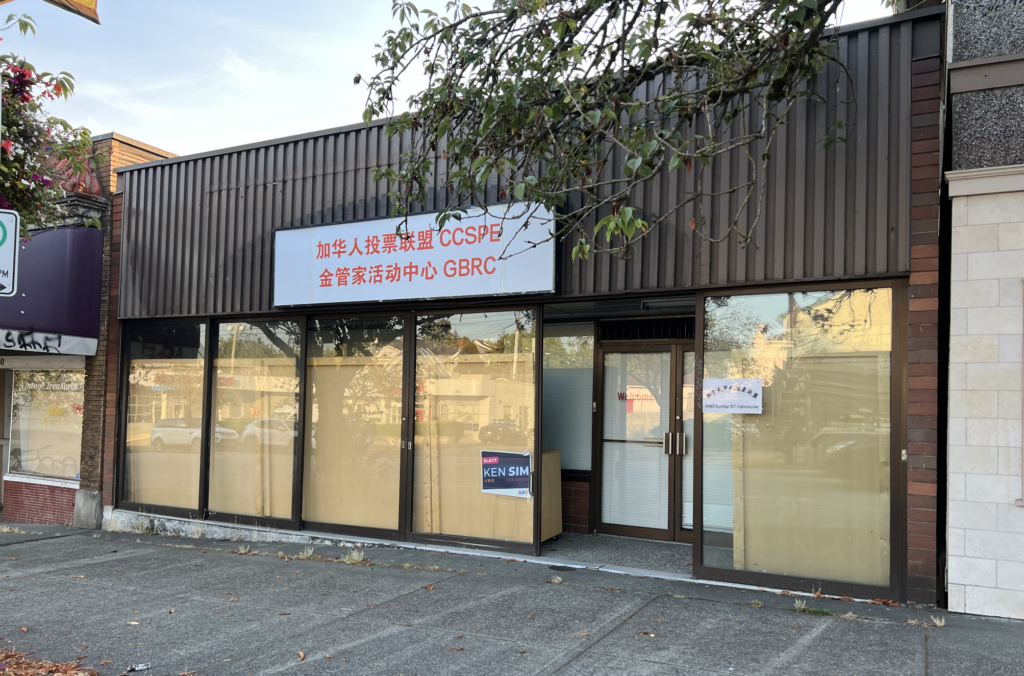
CHINESE CANADIAN SOCIETY FOR POLITICAL ENGAGEMENT CLUBHOUSE AT 3480 DUNBAR IN VANCOUVER
“Mr. Bai wishes not to be included in any media interviews at this time,” Xing said.
Tong’s successor, Yang Shu, and the Vancouver consulate’s director of OCAO, Chen Qingjie, were on ABC’s Orpheum guest list, along with executives from CACA, Wenzhou Friendship Society, Industrial and Commercial Bank of China, Chinese Benevolent Association, Canadian Chinese Women’s Federation, Guangdong Association of Canada, and North America Commerce Valley Development Ltd.
The latter is the developer of the Vancouver Logistics Park in Surrey’s Campbell Heights, an import-export warehouse project connected to Xi Jinping’s Belt and Road global logistics and infrastructure initiative.
At the Orpheum, Sim stopped for a selfie with Ye Hongtao, director of the Canada China Cultural Communication Association and a participant in the August 2019 pro-CCP protests in Vancouver.

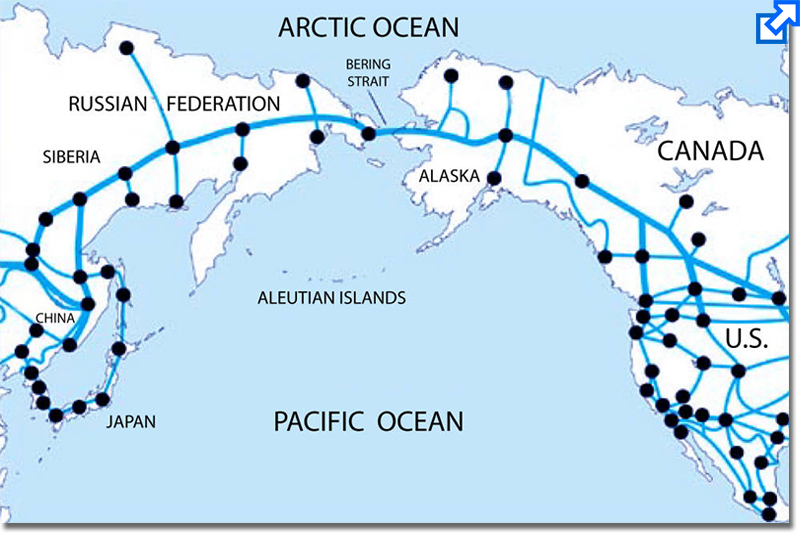




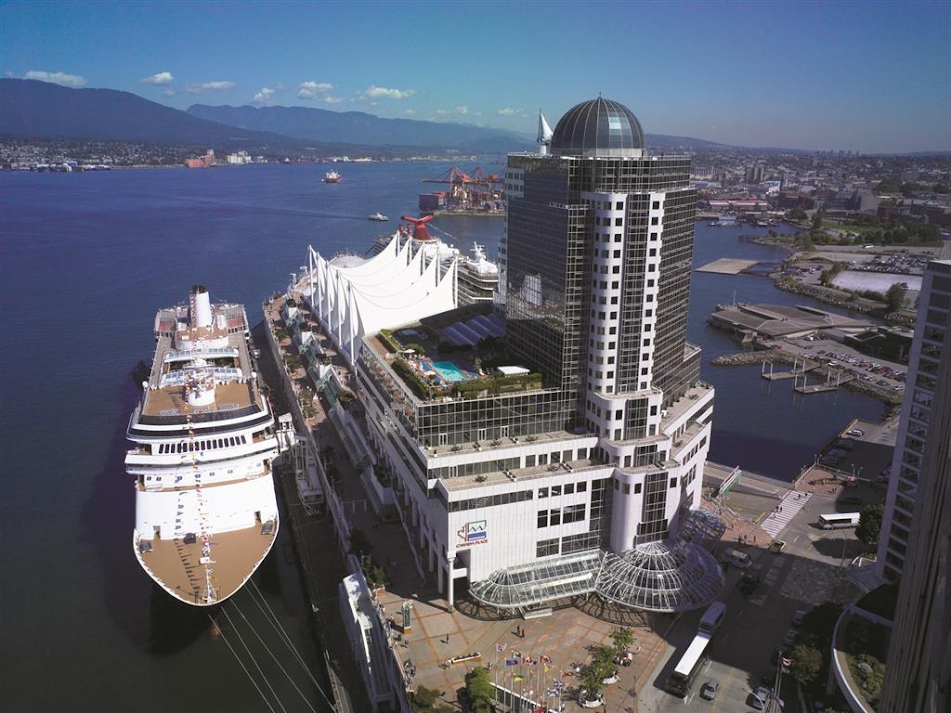





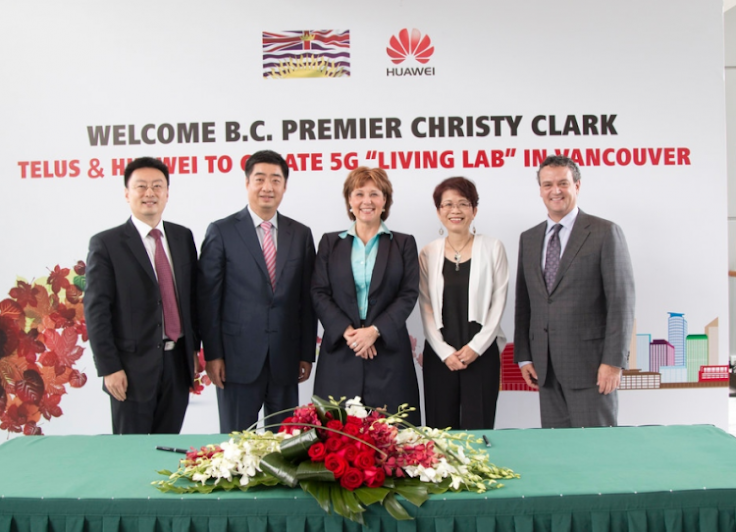


No comments:
Post a Comment
Comments always welcome!